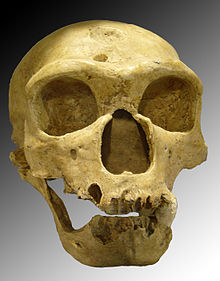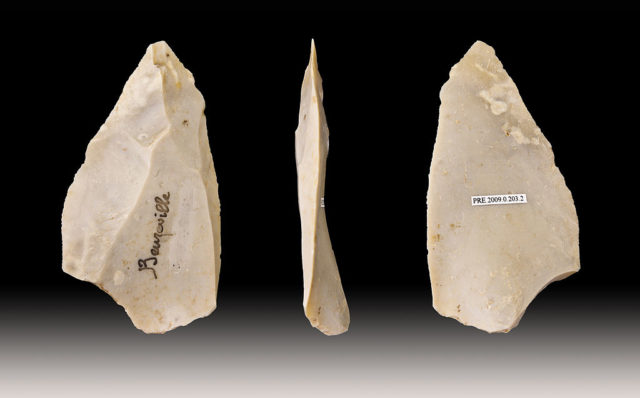In the 1970s, an archaeological dig located at La Cotta de St. Brelade on the island called Jersey, one of the Channel Islands that makes up the Bailiwick of Jersey, uncovered a cave that has produced evidence of Neanderthals who stayed in the area periodically.
The island, located between Britain and France, is believed to have once been an extension of Normandy, France along with the other Channel Islands, Alderney, Brecqhou, Burhou, Casquets, Écréhous , Grande-Île, Guernsey, Herm, Jethou, Les Dirouilles, Les Pierres de Lecq, Lihou, Minquiers, and Sark. While Jersey is closer to France, it is considered to be one of the British Crown Dependencies.

Tools made of stone and flint that have been sharpened to almost razor-like edges and pieces of bone which have been there anywhere from 180 thousand to 40 thousand years reveal that Neanderthals may have visited the site when the land masses were joined together before the English Channel appeared. Although glaciers covered the region at the time, the mouth of the cave would have been visible and accessible. The fact that the tools are from rocks not native to the area leads researchers to believe these early hominins traveled there across the ice taking several days to complete the trip on foot but did not stay for very long. Even after the ice receded it is believed that Neanderthals continued to visit the site for many generations.
Dr. Matt Pope, a Senior Research fellow at the Institute of Archaeology at University College London, a component college of the federal University of London, has stated that he believes this area to be one of the most significant Neanderthal sites in Europe and indicates that is one of the most recent places they would have congregated.
Studies have shown that early Neanderthals, formerly believed to be plodding cavemen that did their best to eke out a living during the ice age in Europe, were more advanced than archaeologists originally thought. Discoveries have shown detailed tools, and bone carvings were used to fashion homes from mammoth bones and surrounding materials. The National Museum of Natural History in Paris discovered a 44 thousand-year-old structure built from mammoth bones that were 26 feet wide, indicating possible communal living. Intricate carvings embellished the inside. In other locations in Europe, more cave carvings have been found, as well as bird talons that may have served as personal adornments, the first known to exist. Some of the carvings display ocher coloring, suggesting that Neanderthals were making crude dyes from natural materials. Evidence of fire and burnt flint has also been found at the La Cotta site.
Why this site was so popular with the Neanderthal population is presently unknown. It may have been a gathering place for the trading of goods and news, or a stopover station for those traveling even further into the European continent. It could have been a religious site drawing pilgrimages on a regular basis or even a vacation spot enjoyed by early humans due to its close proximity to water. Herd mammals would have been plentiful in the area so it is possible the Neanderthals may have come to harvest food and skins, Mail Online reported.

Researchers plan to use advanced archaeological techniques to study the seabed of the English Channel in hopes of finding more evidence of Neanderthal ephemera and possible population movements during the early post ice age years.
The National Environment Research Council at Polaris House in Swindon, Wiltshire, England – just east of London and the UK’s largest sponsor of independent environmental science, which attracts some of the most talented science-based researchers – has provided funds to improve the area, lessening the chance of future erosion and providing for the technologies needed to continue excavation work.
